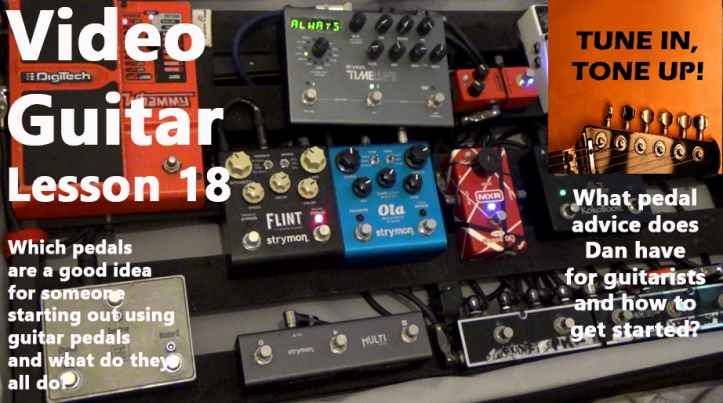It’s really brilliant to be back and we are loving recording and releasing new content for you, our wonderful listeners. This lesson is an extension of the previous one and we aim to continue this into another lesson next time with a focus on the style and techniques that you might use to deliver your lines and package your improvisation.
This lesson tackles adding the 6th and 9th intervals without huge amounts of theory but, hopefully, immediately usable ideas and a rationale that will help to spice up your solos and motivate and inspire you to perform.
We use a backing track for our own noodling and improvisations. As always, I apologise for mine and listening back hope to continue working on tightening up the rhythmic motifs and delivery but we hope that you will take something from listening to both of us, warts and all. After all, learning can really take place when mistakes can shine a light on areas for improvement. This is one thing that I always really take from producing these podcasts – the opportunity to record myself in the moment and without preparation time then to listen back and spot the issues and set myself some targets. Dan’s playing, as always, continues to give me a whole plethora of ideas and inspiration. I hope it does for you too.
You’ll hear our chosen backing track with our improvisations at just after 5 and 25 minutes in today’s lesson. Next lesson, we will focus on some techniques and style.
The backing track is called:
Dirty Blues Rock Guitar Backing Track Jam in Am
Timings for the SoundCloud audio version
| 1:42 Brief recap of last episode 2:42 The first pentatonic shape 2:52 The penatonic shape an octave higher 3:05 Pentatonic with extension up the neck 4:53 A little bit of fire and a little bit of polish 5:11 Dirty Blues Rock Guitar Backing Track Jam in Am 5:43 Start of first backing track 11:45 Adding the 9th B note in A 12:08 Adding in the 6th note or F# in A 14:23 Essentially we now have all the notes of the Dorian mode 15:15 So we can get some nice uses – solo opener is to bend from the 6th up to the 7th 16:30 Carl Verheyen – What is it that makes one player sound so different? It’s the line. The way players construct their line 18:26 Key of A in one position – you run out of notes 18:37 Start below the position and work above it my working diagonally 19:42 Little insight on Van Halen – using patterns which might move out of key 20:11 Yngwie Malmstein – Always in key 20:17 Allan Holdsworth and Ollie Halsall (https://www.youtube.com/watch?v=JcCoPmVLwjE) 21:04 Flesh out the Dorian mode in Am 25:30 second jam 32:27 Considering the style, techniques and delivery of the lines: we’ll make this the focus for next time 32:49 Homework – look at TrueFire, play over backing tracks and consider your note choice and the techniques you are using 33:49 Make your mistakes in the Woodshed 34:55 Then take your ideas into rehearsal 36:19 Use a metronome while figuring stuff out 36:33 Home is where you get your stuff together, rehearsal and home are where you make mistakes and live is where you make as few mistakes as possible |
Please use the timings to visit and revisit this episode
Last ten lessons for new arrivals or those who want to brush up on this content
Curt Mangan Strings / Website: https://www.curtmangan.com/
https://w.soundcloud.com/player/?visual=true&url=https%3A%2F%2Fapi.soundcloud.com%2Ftracks%2F806879662&show_artwork=true&maxheight=1000&maxwidth=723And 9 of our older videos – a format we are veering away from to focus on our audio podcast releases.
Keep watching, listening and getting in touch. We really want to hear from you!
You may want to check Dan Davies out in action. You can find Dan’s album on Spotify and other streaming music sites, like Apple Music (click the links to take you to his album ‘Flight’)
Enjoy your musical journey and be in touch!
Gary and Dan

